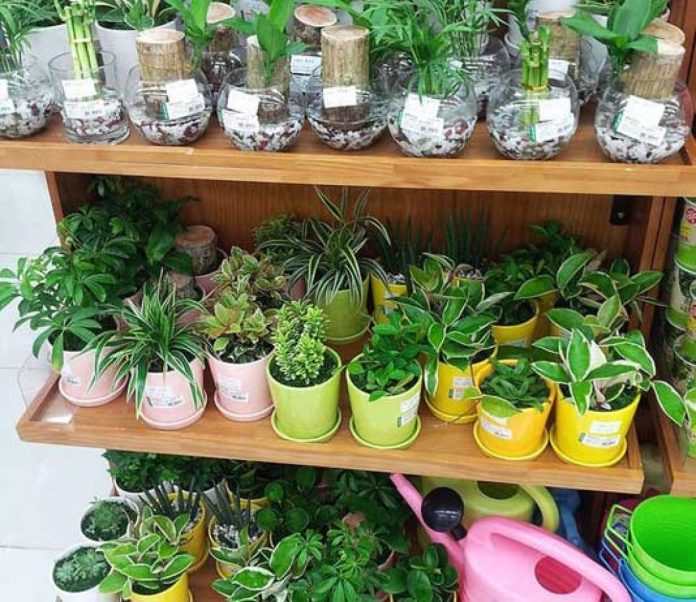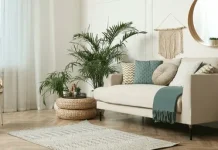Plants may add a great deal of organic personality to a room; therefore, we’ll learn some name of indoor plants. The greatest houseplants clean the air, release tension. And demonstrate to your relatives and friends that you can manage for a living being apart from your body. A group of gorgeous green plants is the most exciting and charming room accent. But that wasn’t what you got the last time you attempted to grow something, was it?
It’s a well-known cold case. There were no solutions to be discovered among the drooping leaf mulch. Was it because of the light? Should you have gone with a different type of soil? Have you sent it enough liquid? Is it possible to have too much? Our initial plant might seem like an enormous weight. But, for a learner, plants that are a little more tolerant for those with a green paw are whatever you need.
We’ve created a list of 15 of the greatest houseplants. And some recommendations to remember while you try to manage plants.
Table of Contents
Best 15 Name of indoor plants
1. Good Communicators Spider Plant
Spider plants are excellent communicators, making them perfect plants for newcomers. These tips of their foliage become brown whenever they require water. Its lengthy foliage will droop and appear soggy if it is underwater. The lighter discusses that the difference will become broader. When they get a large area of sunlight, the colors will vanish if they get a bit of shade.

Once they’re content for several months at a period, they’ll create “spiderettes,” which are tiny replicas of themselves. The spiderettes may be readily transplanted to make new plants.
2. Best cactus: Silver Torch Cacti
This plant requires direct sun for at least 6 hours every day because it is a cactus. But it requires nothing further. It’ll still keep growing, but with more sunlight, it will grow more quickly.
It only takes a little watering per 2 – 4 weeks, something less in the winter. A little more in the spring. It is watering away from the middle of something like the plant. Therefore, the cactus has root systems that take up desert moisture.
3. A Widely Loved Plant: PILEA PEPEROMIOIDES(the Name of indoor plants)
It is a popular plant with various charming titles, including the UFO plant and Chinese money plant. Because of its affinity for moisture, it’s a terrific way to bring vibrancy to a toilet. Germinated foliage discs use in any room with plenty of artificial lighting. To minimize fungal diseases, let them dry naturally out among the waterings. Once they get dry, their foliage may droop somewhat.
4. Beautifully Coloured Plant: Bromeliad(the Name of indoor plants)
The Bromeliad should not be feared. Despite their reputation as a plant for skilled gardeners. These gorgeously colored leaf plants make for excellent, small houseplants. They prefer medium to strong sunlight (but not full sunshine). And thrive in shallower pots with drained soil when grown home.
You may water the plants during the summer season by replacing the center container (also called the bowl) weekly. And less frequently during winter. To minimize water retention, ensure you empty it daily. Because they are not strong eaters, you can put a slow-release fertilizer into the plant’s container once a season.
5. Iconic Cactus: Bunny Ear Cactus(best indoor plants)
Opuntia microdasys is known for its flat-spreading form and surprisingly soft yet stinging barbs. Although attractive, it’s difficult to go mistaken with this cactus. Suppose you’re searching for a minimal cactus to complement a cactus environment. Give these plants lots of sunshine and moisture. Once they’re dry — they’re difficult to kill. Imagine using a sandstone, sand-colored, or primitive planter as a compliment.
6. Prayer Plant (Maranta leuconeura)
It is indeed a low-light plant that prefers moist conditions. That may be a terrific feature to your toilet, where it is periodically soaked in warm, wet air. It enjoys dampness but not soggy roots; in parts of the tropics where it thrives. Rain is typically received by trees and plants further up in the woods. It enables less liquid for the roots of plants to absorb.

Prayer houseplants are easy to take care of, but they prefer a specific sort of atmosphere. It is a wonderful alternative for newcomers with suitable living quarters.
7. Tropical spathiphyllum(the Name of indoor plants)
Even interior, tropical spathiphyllum plants, commonly called peace lilies or sweet Pablos may produce blooms. They can survive in low-light situations, but they also thrive in brilliantly illuminated environments. Whenever the foliage begins to drop, you’ll feel it is time to fertilize it. Pablo is roughly 4 feet in height and comes directly from Costa Fields to your home.
8. Cats of the Plant World: Succulent(small indoor plants)
The felines of the world of plants are succulents. They’re self-sufficient and prefer to be left alone to spend the day resting on a solar platform. They’d also look great inside any white, basic coffee establishment that serves latte art. Several succulent kinds suit their unique style, and they all need something more than a sunny location.
Putting your tongue in the dirt of all these is a bad decision. So instead, fill a basin with water and drop the plant in. Then let the roots feed for approximately half an hour after you’ve lifted it, or it feels solid.
9. Hanging Plant: philodendron brasil
The philodendron brasil can thrive in minimal environments and only requires watering weekly. These sturdy plants arrive in a hanging jar with a retractable hanger from the Local Hardware store. Place it on your side, beyond a window, or with an interior wall. And watch the leaves slowly descend to the ground.
10. Extremely Larger plant: Zebra Plant
The zebra-printed design on the parts of this plant offers a stylish accent to your ledge. Putting the zebra in your toilet, where the hot weather from your shower will help it grow. Another option is to buy a lot and create a lush indoor rainforest.
11. True Hardiness Plant: Heartleaf Philodendron
Another houseplant is well-known for its genuine toughness. Philodendron hederaceum can be used as a hanging plant or as a grower with the addition of a trellis. To watch it grow, keep it out of direct sunlight and lightly wet the soil. You can reproduce cuttings to offer as presents to friends once your plant becomes unruly.
12. Big-Leafed plant: Elephant Ears Plant
Another huge plant for rooms that demand much natural light is Colocasia gigantean. After proper planning, the stem is a famous element in meals in different nations. They’re a little tough to cultivate indoors, but they’re well worth it. They need indirect sunshine and much humidity.
13. Moon Orchid (Phalaenopsis orchid)
Orchids have a record for being distressing, but contemporary plants, particularly the Phalaenopsis, which occurs in a huge range, are considerably more hardy. It is the type you’ll find at food and housewares outlets in a variety of colors.
Orchids want a wet atmosphere with some light, so a toilet or kitchen cabinet may be ideal. They require a spray of moisture once a week; excessive moisture is a typical error. They love colder interior temperatures and avoid direct sunlight. They’ll thrive in a location that receives some indirect light daily.
14. Attractive Tree: Hawaiian Umbrella Tree Bonsai
This flexible and handsome tree, technically known as Schefflera arboricola, will appeal to bonsai aficionados. Even more, they withstand a wide range of illumination and moisture conditions admirably. Allow your umbrellas tree to develop organically or prune it to create a unique form. Allow it to grow properly or confine it to a tiny container as a desk ornament.
15. A Little Trickier Plant: Air Plant (Tillandsia)
Air plants are more difficult to grow than other plants on this list. Because they don’t have ground, you’ll spritz them or immerse them in seawater once a week. They’re known for sucking up minerals from the air and keeping them out of direct sunlight.
FAQ’S
1. Is it necessary for me to purchase indoor plants?
You can undoubtedly do so. It not only brings a splash of greener (or any other color) to your house. But they also act as an immediate mood booster and improve health. Houseplants have been found in a study to alleviate psychological and physiological tension. Improve attention and enhance growth. Furthermore, houseplants assist in the purification of indoor air, making them proper air cleaners.
2. What is the best way to hang indoor potted plants?
An indoor planter can be attached to the ceiling. Locate the joist or post closest to the planting site and secure a solid hook thread to it. Suppose you didn’t locate a beam, a switch bolt. Or a combination attachment used for empty walls such as wallpaper or plaster. Whatever support structure you use must be robust enough to hold the weight of the plant, ground, and liquid.
3. What would we put inside the house potted plants?
Drainage saucers come in various shapes and sizes to capture the drainage, ranging from basic. In addition, Practical polymer drainage saucers for ornate ones. The height of the saucer ought to be roughly the same as the height of the container. Keep it from spilling as water seeps out of the planting. It’s better to use two pots for hanging small plants name.
Conclusion
Throughout this article, we discussed 15 name of indoor plants. If you are someone how fascinate making over your garden with lots of natural beauty, then you should know all of them. Hope you liked the article. Don’t forget to check out other amazing articles.








